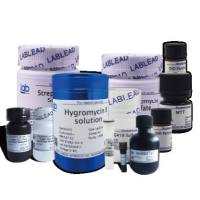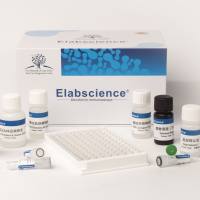How to Maintain an RNase-free Lab
互联网
How to Maintain an RNase-free Lab
Let's admit it, everyone who has worked with RNA has, at some point, been affected by RNase contamination. Sources of contaminating RNase include procedures that use RNase such as plasmid preps and nuclease protection assays. Bacterial cultures grown for plasmid preps or cloning, and bacterial products, such as some restriction enzymes can be a source of RNase. Microorganisms in the air, on surfaces, in one's solutions or water supply are environmental sources of RNase. Even you are a source of RNase. Human skin and body fluids such as saliva, tears and mucus, can contain RNases (so don't cry over your samples). Because RNases exhibit such a common presence in routine lab research, it is essential to develop a program of RNase control involving reagent preparation and testing, routine decontamination, and the use of certified RNase-free reagents and equipment such as microfuge tubes and pipette tips. See below for a schedule for maintaining an RNase-free lab. (For additional information on working with RNA, see Technical Bulletin #159: Working with RNA )
Schedule For RNase Control
Ambion scientists recommend the following schedule for RNase contamination control:
-
Daily
- Use Ambion's certified RNase-free buffers and reagents
- Use Ambion's certified RNase-free consumables, such as microcentrifuge tubes and pipette tips
- Use Ribonuclease Inhibitor Protein and/or ANTI-RNase in reactions such as in vitro transcription and RT-PCR
-
Weekly
- Thoroughly clean lab benchtops, pipettors (see sidebar below) and tube racks with RNaseZap ®
-
Monthly
- Test water source for RNase using RNaseAlert - distilled deionized or ultrapure water is often RNase-free without DEPC treatment (see " RNase and DEPC Treatment, Fact or Laboratory Myth? ")
-
As Needed
- Test bench-prepared reagents for RNase with RNaseAlert
- Clean electrophoresis equipment with RNaseZap prior to use with RNA
- Use aerosol resistant pipette tips when performing procedures that incorporate the use of RNase
<center> </center>

How to Decontaminate Pipettors with RNaseZap ®

Routine cleaning of pipettors with an RNase decontamination solution like Ambion's RNaseZap can greatly reduce the likelihood of sample loss due to RNase contamination. To decontaminate pipettors, carefully remove the pipettor shaft and ejector from the pipettor body. Be careful not to loosen the small seal and o-ring on the end of the plunger. Squirt RNaseZap into the shaft and wipe the shaft exterior and tip ejector with an RNaseZap -saturated paper towel. The same paper towel can be used to carefully wipe the pipettor body. Immediately wipe off any excess RNaseZap . Be careful that the paper towel is not so wet that liquid could seep into the pipettor. Rinse the shaft and ejector with RNase-free water to remove any RNaseZap residue. The water rinse can be followed by a brief ethanol rinse to expedite drying. Once shaft and ejector are dry, reassemble the pipettor.










